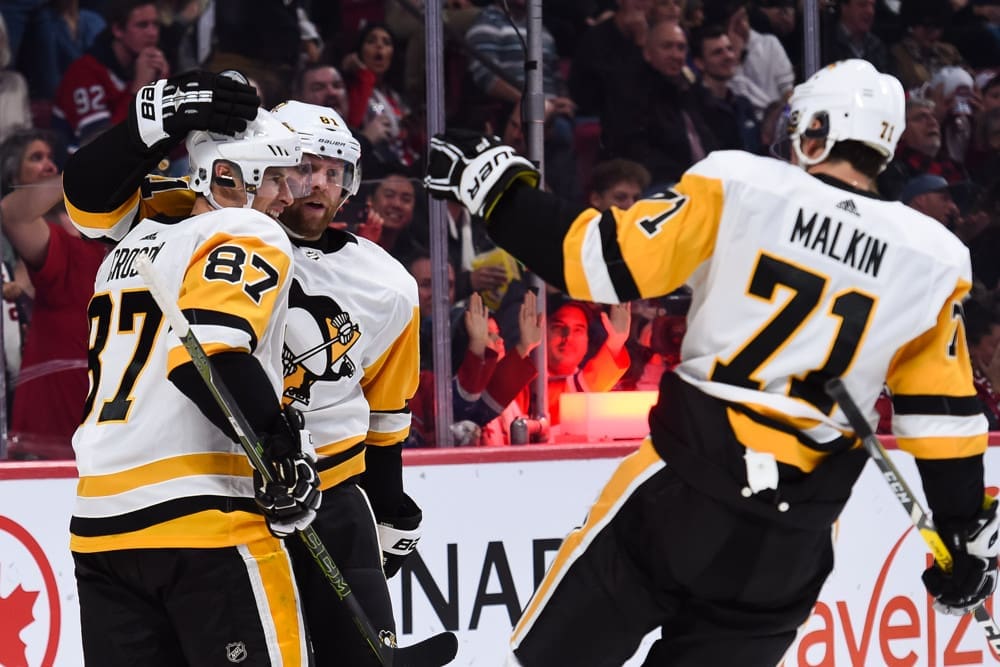Penguins
The Party is Over; Penguins Need Big Changes or Risk More Losing

PITTSBURGH — Just like that. As with most, the end was unexpected, sudden and came far too soon. The Pittsburgh Penguins expected their core group of players to be Stanley Cup contenders for at least a couple or a few more years. Instead, they were discarded like a stack of old newspapers Tuesday night by the New York Islanders in a Round One sweep.
It’s been a hell of a party.
But it’s over.
“We felt good about our game coming into the playoffs. We were playing some good hockey,” Sidney Crosby said.
With a string of wins and strong performances, the Penguins quest to find an identity looked like it was on the fast track in the second half of the season even as the team simultaneously played musical chairs with core players on the injury list, including Evgeni Malkin and Kris Letang.
However, the Penguins progress was quickly undone by a fully healthy roster. It’s not supposed to be that way, but it most certainly was. The full Penguins roster instead abandoned the simple play which made the team successful. In the end, New York buckled their will to fight for that dirty space in the low zone which is crucial to being the hard team they want to be.
It shouldn’t be lost on anyone that the Penguins were missing Letang and Malkin for most games in the final month of the season. That statement isn’t an advocation of dealing one or both, but it is a testament to the Penguins ability to win without players not named Sidney Crosby.
And its confirmation the Penguins core is now less than the sum of its parts.
The aging Penguins core consists of remaining stars and leaders Crosby, Malkin, Letang, with new co-stars Phil Kessel and Patric Hornqvist. Jake Guentzel and Matt Murray have also joined the cast.
The Penguins should not be a better team without some of their star players but that’s just what happened this season as the total of the star players pushed them off their best game which was successful throughout March and pulled them back to their traditional, high-risk, high reward game–which doesn’t work anymore.
Back in January, Penguins head coach Mike Sullivan warned his team before the All-Star break to return and “buy-in.”
That buy-in from some was always dubious.
The 2016 Penguins rebirth with the new core players who joined the 2009 Stanley Cup holdovers Crosby-Malkin-Letang carried Sidney Crosby into the conversation of top-five all-time greats. It soothed years of self-inflicted failure from 2010-2015. It gave rise to thousands of new Penguins fans, massive parades, and hilarious Justin Schultz memes.
But the party is over.
Simply listen to Evgeni Malkin, who was blunt and piercing following the Penguins loss and getting swept by the New York Islanders. Malkin said:
- “The young teams are hungry.”
- “No one respects our team, everyone wants to beat the Penguins.”
- And, the Penguins must understand…”We’re not champions anymore.”
Ouch.
Penguins leader and “Dad,” Matt Cullen who likely played his last NHL game was little more sugar coated in his assessment.
“I still believe the future is bright for the organization. There are some pretty special players here. This particular group, we just weren’t able to get it done,” Cullen said.
No, the Penguins were not able to get it done. The Penguins core has become a square peg in a round hole as the game accelerates and eschews creative offensive play in favor of rigid system adherence. Mistakes are now magnified instead of reciprocated, and the Penguins core makes far too many mistakes.
Out of frustration, Malkin said to the media including Pittsburgh Hockey Now, “Maybe they have a little better system … Maybe better players.”
Circle Kessel as the low hanging fruit. Kessel finished 35th in the league with 43 even strength points (15g, 28a) but coughed up the puck a whopping 78 times (all situations) and was a chief culprit in the Penguins league-worst 15 shorthanded goals against. He is the antithesis of the Penguins push for simplicity and being hard to play against.
Kessel told reporters, “We’ll see” if he’ll be back next year.
Prepare for what comes next. He and his $6.8 million cap hit are unlikely to survive the coming retool no matter how deep the devotion of some fans.
But a team which is swept in Round One needs far more than one change. The changes began last summer. Of the 19 players in a Penguins sweater for Game 4, eight were either not with the Penguins last season or at the start this season (We’ve included Garrett Wilson and Teddy Blueger in that total but they were in the Penguins organization at the AHL level).
However, including Crosby, the Penguins core consists of five players who will be 31-years-old and older next season and account for $37.55 million of the expected $83 million salary cap. Yes, that is nearly half for a core which was unceremoniously bounced.
The Penguins dynastic predecessors in Los Angeles and Chicago were in a different boat and rowing in a different direction. Both LA and Chicago were saddled with disastrous contracts with too many years awarded to unmovable players.
The Penguins are not saddled with many if any unmovable contracts or players. Instead, the Penguins must figure out who they are and who they want to be. And most importantly, who wants to be a part of that new identity.
As the Penguins move forward, “buy-in” should be the determining factor when evaluating players. Those who they feel bought into the system and concept can stay. Those who didn’t?
It’s been a hell of a party, but it’s over.












